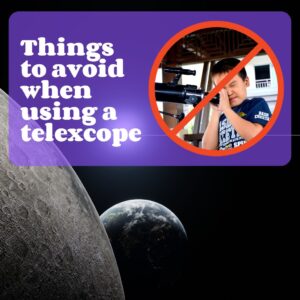This site contains affiliate links to products. I may receive a commission for purchases made through these links.
When it comes to choosing the best optics, it’s often a toss-up between Celestron and Vortex. Both brands have carved a niche in the market, offering high-quality products that are a hit with hobbyists and professionals alike.
Celestron is known for its top-notch telescopes, while Vortex shines in the field of binoculars and scopes. But which one outperforms the other? That’s the question I’ll be tackling in this article.
Celestron: The Leader in Telescopes
Let’s delve deeper into Celestron’s offerings. As an expert in the field of telescopes, Celestron has consistently been at the forefront of innovative design and advanced technology.
What sets Celestron apart? Quality and commitment. The company’s devotion to high-quality material and precise craftsmanship taps into the needs of both professional astronomers and enthusiastic stargazers. Celestron’s telescopes are meticulously designed, ensuring that every gaze into the night sky is a unique experience.
One of Celestron’s greatest assets is its SkyAlign technology. This feature facilitates finding celestial bodies with ease and precision. All you need to do is align the telescope with any three bright objects in the sky, and voila – instant astronomy. It’s a tool that is remarkable for both its simplicity and effectiveness.
Unearthing some of Celestron’s most popular telescope models reveals their wide-ranging capabilities and superior optics. Let’s take, for example, the NexStar 8 SE. This model has become a favorite among users due to its flawless optics, user-friendly set up, and cutting-edge yet easily accessible technology.
| Model | Key Features |
|---|---|
| NexStar 8 SE | Flawless optics, user-friendly, advanced technology |
Remember, Celestron isn’t just about telescopes. They also offer an array of high-performing binoculars, microscopes, and spotting scopes. Each product embodies the company’s dedication to excellence and contributes to their standing as a leader in the optics industry.
Next, we’ll shift our focus to Vortex and examine their premium product range. How does it measure up against Celestron’s industry-leading telescopes? Are Vortex’s binoculars and scopes a match for Celestron’s versatile array of products? Let’s explore.
Vortex: Binoculars and Scopes Done Right
Switching our attention to Vortex now, it’s instantly noticeable that like Celestron, they too show a generous commitment to quality and precision. Renowned for their wide range of products from binoculars to spotting scopes, Vortex holds a reputable position in the market.
Let’s take a closer look at the Vortex binoculars, shall we? Two of their most popular series are Viper HD and Razor HD. Appreciated for high-performance, Viper HD binoculars offer stunning image clarity and brightness, making your viewing experience unparalleled. On the other hand, Razor HD series ups the ante with premium-level optical quality and durability.
Here’s a brief comparison of Viper HD and Razor HD for you:
| Viper HD | Razor HD | |
|---|---|---|
| Optical Quality | High | Premium |
| Brightness | High | High |
| Durability | Good | Excellent |
Moving on to Vortex’s range of spotting scopes, it’s all about delivering high-quality field performance. The company’s dedication to advanced design engineering is manifest in their Viper HD and Razor HD spotting scopes, both offering superior resolution.
Let’s keep the spotlight on scopes for a bit and explore the scopes in comparison:
| Viper HD Scope | Razor HD Scope | |
|---|---|---|
| Resolution | High | Superior |
| Build Quality | Solid | Robust |
| Price | Affordable | Higher-end |
Remember, when choosing between Vortex and Celestron, one isn’t necessarily ‘better’ than the other. It’s more about what exactly you’re after – a telescope for stargazing or binoculars and scopes for various outdoor activities. Let’s dive deeper into this comparison in our next section.
Quality Comparison of Celestron and Vortex Optics
Comparing the quality of Celestron and Vortex optics isn’t a rush decision. I’ve dug deep into the aspects we all care about: image clarity, build, and overall performance.
Celestron’s reputation for quality optics precedes them. Their SkyMaster Series, for instance, is praised for image clarity and detail. These binoculars pull off a clear celestial view, despite their average price tag. Additionally, they’re built to be durable. Their robust housing, tethered lens caps, and grip surface weather the rigors often met by outdoor enthusiasts.
On the other hand, we have Vortex. Their HD Series binoculars offer stunning resolution. Be it the Viper HD or Razor HD, users appreciate a clear, crisp image regardless of distance. Furthermore, these series boast rugged durability. They comfortably withstand regular use in challenging environments, making them a popular choice among professionals.
Ideally, performance is where the rubber meets the road for optics. Celestron telescopes deliver good performance for their value. Users often commend the SkyMaster for their consistent view quality. Now think Vortex. The performance reflects their commitment to quality. Even under challenging conditions, the Viper HD and Razor HD stay ahead of the pack, giving a vivid and sharp image.
Considering these key aspects, let’s compare the optics side by side in a table:
| Feature | Celestron | Vortex |
|---|---|---|
| Image Clarity | High (SkyMaster series) | Excellent (HD series) |
| Build Quality | Durable | Highly durable |
| Performance | Good | Superior |
It’s not about brand supremacy. The choice between Celestron and Vortex hangs largely on specific needs and preferences. After all, both brands demonstrate a commitment to quality and precision in their products. They can meet various requirements depending on the use case, user experience level, and budget. The rewarding part is getting an optic that amplifies your viewing while still meeting your specific needs.
Celestron vs. Vortex: Price Comparison
When it comes to choosing optics like binoculars, the cost can be a major deciding factor. Between Celestron and Vortex, there’s a wide range in pricing depending on the specific product line and features you’re interested in.
Celestron’s pricing strategy is largely based upon the level of sophistication seen in their range. For instance, Celestron’s SkyMaster Series, renowned for its escalated image clarity and durability, falls into the mid-range pricing category. Prices start from around $200, stretching up towards $300 for models offering larger field-of-view and more complex lenses.
In contrast, Vortex takes a slightly different approach. Their HD series binoculars, famous for stunning resolution and rugged durability, fluctuate in price depending upon the model-specific features. Prices generally start around $150 for entry-level models, escalating up to $500+ for professional grade binoculars with advanced optics.
Here’s a rough summary of some of the pricing context between these two optics giants:
| Celestron | Vortex | |
|---|---|---|
| Starting Price | $200 | $150 |
| High-End Price | $300 | Over $500 |
In the optics world, it’s key to remember that a higher price tag doesn’t always equate to better quality. Yes, there are differences in design, materials, and often features, but the best optic for you is the one that fits your specific needs.
At this point, you might be thinking – it’s obvious, I’ll go for the less expensive Vortex entry-level model. But keep in mind, your ultimate decision should be built around more than just the price tag. It’s about the longevity, quality, and the after-sale services that both these brands boast.
User Reviews and Recommendations
When we’re diving into the world of user reviews and recommendations, it’s clear that both Celestron and Vortex have amassed a significant number of positive customer testimonials. However, it’s no secret – customer opinions can vary greatly depending on their individual needs and uses for these optics.
So, let’s take a deeper look into what I’ve found.
According to my research, Celestron users are often looking for advanced, high-quality, and reliable optics. They praise the brand’s innovative features such as the large field-of-view and complex lenses which provide sharp, bright, and high-resolution viewing. Celestron’s various price points also cater to a wide range of enthusiasts – from the amateur stargazer to the veteran birdwatcher. With a pricing strategy that starts from around $200 and tops at about $300 for larger field-of-view models, users feel they get value for their money and don’t mind paying a bit more for top-notch lenses.
On the other hand, Vortex users appreciate this brand’s practicality and endurance. From the entry-level models starting at just $150 to the superior, professional-grade binoculars priced over $500, Vortex offers something for everyone. Users frequently mention the durability of Vortex optics and the fact they hold up well under tough weather conditions. That’s a major plus for those requiring an optic for more rugged, outdoors scenarios.
Beyond the products themselves, it’s worth noting that both brands are renowned for their exceptional customer service – providing efficient after-sale services and extensive warranties. These additional benefits only serve to enhance the overall user satisfaction.
Conclusion
After diving deep into the world of optics, it’s clear that both Celestron and Vortex have their unique strengths. If you’re after advanced features and high-resolution viewing, Celestron’s range might be your go-to. But if durability and practicality top your list, Vortex could be your perfect match. With both offering exceptional customer service and after-sale services, it’s no wonder they’re highly favored in the market. Ultimately, your choice between Celestron and Vortex will hinge on your specific needs and budget. So, don’t hesitate to explore these brands further and find the perfect optic for your adventures.
What are some features that Celestron users appreciate?
Celestron users often commend the brand’s advanced features like a large field-of-view and complex lenses, which provide sharp and high-resolution viewing.
How is Celestron’s pricing strategy viewed by users?
Celestron’s pricing strategy is viewed positively by users who believe the optics, priced between $200 and $300, offer good value for money.
What do Vortex users value in the brand’s optics?
Vortex users appreciate the brand’s focus on practicality and durability, making these optics suitable for a variety of environments and uses.
How much do Vortex’s professional-grade binoculars cost?
Vortex’s professional-grade binoculars can cost over $500, indicating a commitment to high-end, quality optics.
What after-sale services do Celestron and Vortex provide?
Both Celestron and Vortex are recognized for exceptional customer service and after-sale services, ensuring customer satisfaction and fostering user loyalty.



